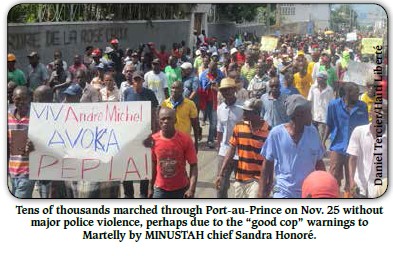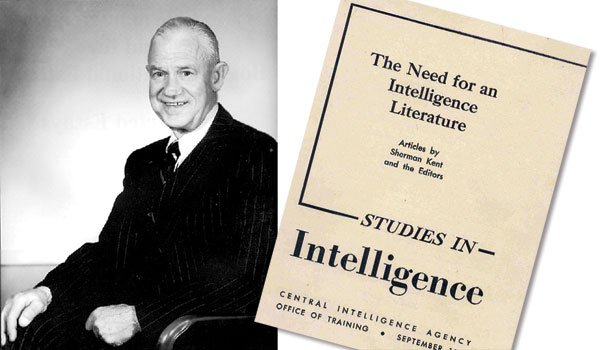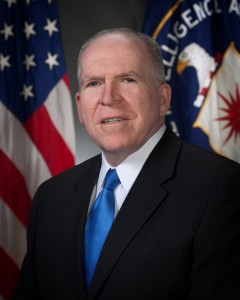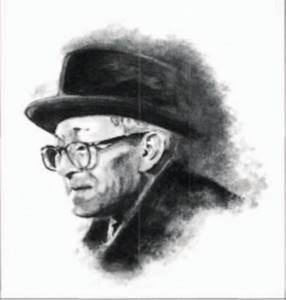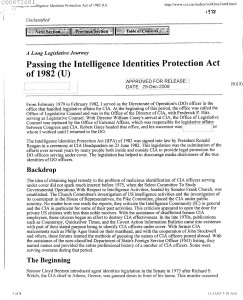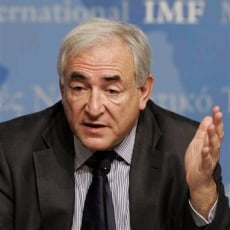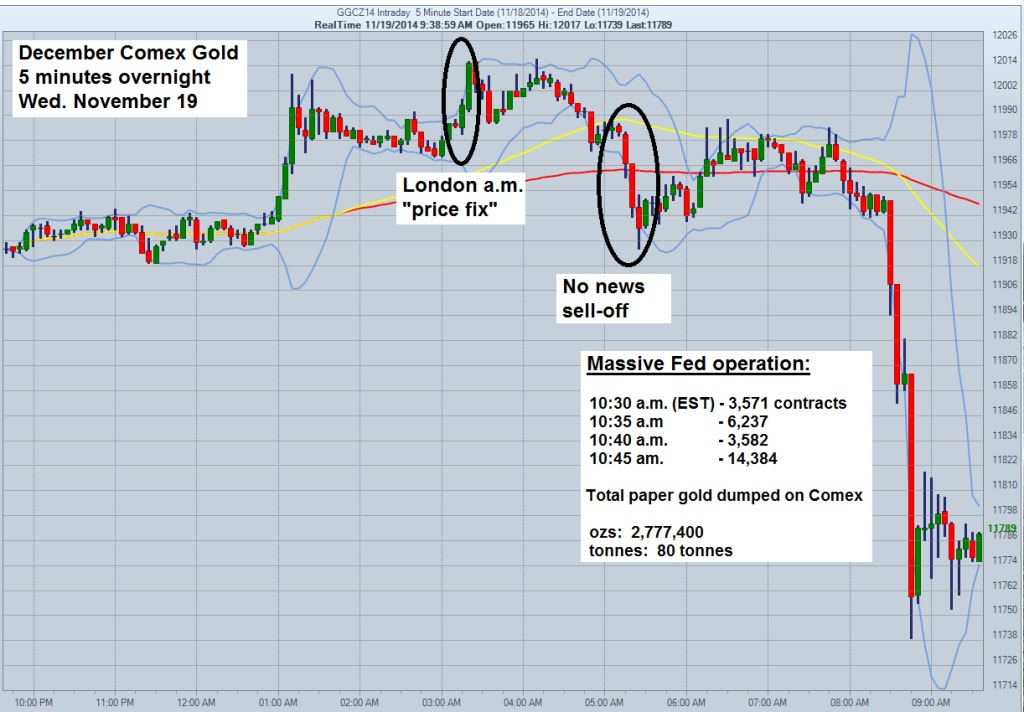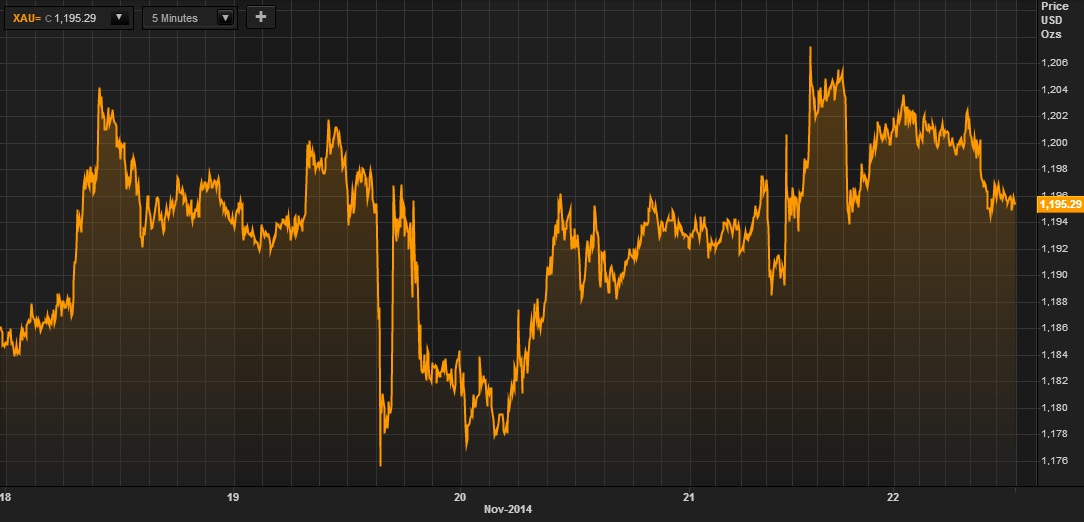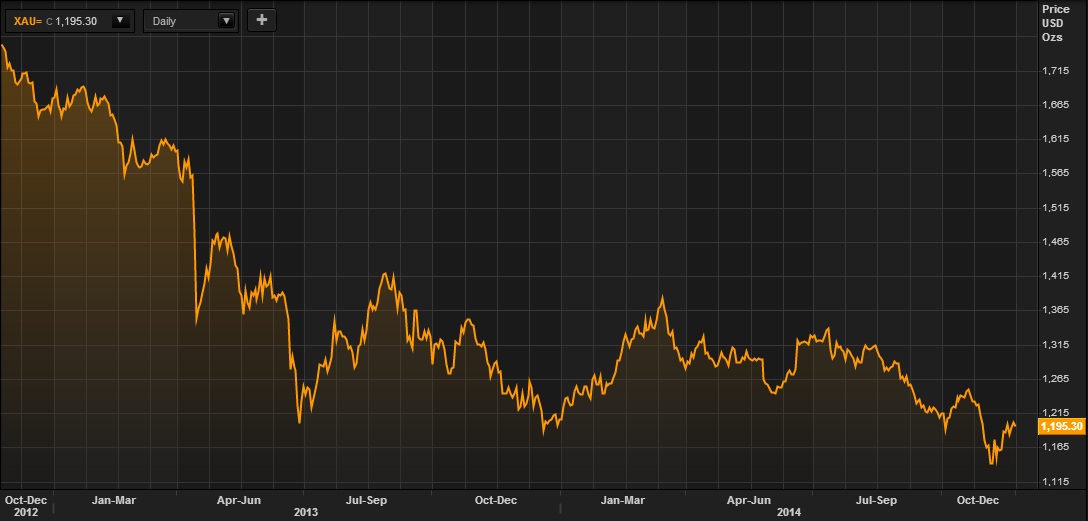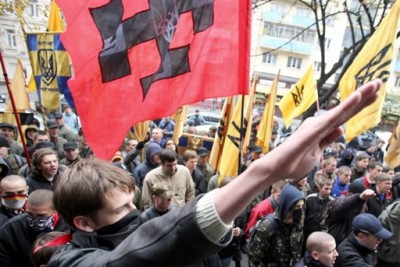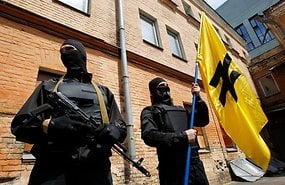This article reviews a number of developments that occurred between 2000 and 2014 related to the debt issue, various aspects of the international crisis |1|, international financial institutions, the scope of attacks against social and economic rights, and CADTM priorities.
Several changes have occurred since the end of the 1990s.
1. Several countries in the South have moved away from neoliberal policies
After over twenty years of neoliberal policies and multiple forms of resistance, towards the end of the 1990s and at the beginning of the new millennium, several Latin American nations disposed of their neoliberal presidents thanks to massive social mobilisations and elected heads of state who implemented policies that meet the people’s interests. The people of those countries wanted to free themselves from measures derived from the ‘Washington consensus,’ as imposed by the IMF and the World Bank (privatisations, cuts in public services, ‘liberalisation’ of trade that deprives small local producers of any protection, enforced commodification, destruction of decent jobs, cancellation of subsidies for food staples and services such as water, electricity, gas, and transport). These policies were implemented on the pretence of repaying their public debts, much of which was illegitimate or illegal, as was the case in Venezuela, Ecuador, Bolivia… |2| Ecuador’s government took a remarkable initiative in 2007-2008 when it carried out a complete audit of its debt with the active participation of representatives from social movements |3|. On the basis of this audit, it then suspended repayment of the part of the external debt identified as illegitimate, and imposed a significant reduction of the debt to its creditors |4|. This made it possible to increase social spending. Unfortunately, this initiative did not snowball as had been hoped, since other countries in the area did not follow suit.
On the upside, let us note that the governments of these three countries also increased taxation on large foreign corporations that exploit these countries’ natural resources. This development significantly boosted their tax revenues, and made it possible to increase social spending.
Moreover, citizens in these three countries democratically adopted new Constitutions, which include a measure on the removing of elected representatives at mid-term.
Finally, it should also be added that Bolivia in 2007, Ecuador in 2009, and Venezuela in 2012 took the wise step of leaving the WB International Centre for Settlement of Investment Disputes (ICSID).
The International Centre for the Settlement of Investment Disputes (ICSID),
The ICSID was founded in 1966, with the purpose of providing a means of conciliation and arbitration to settle investment disputes between contracting States and nationals of other contracting States. To put it simply, it is an international arbitration tribunal, which deals with disputes arising between a private investor from a contracting party State and the State where the investment is based. The Centre’s jurisdiction (article 25) extends to disputes of a legal nature, relating directly to an investment, between a contracting State (or a government organisation or body dependent on that State and designated by it to the Centre) and a national from another contracting State.The Centre is usually designated as competent to deal with disputes arising within the context of bilateral investment agreements. Thus, almost 900 bilateral treaties on the promotion and protection of investments explicitly name the Centre as the instance for settling disputes between the private investor of a contracting party, on the one hand, and the State where the investment concerned is based, on the other. The Centre’s arbitral sentence is mandatory and cannot be appealed (article 53). The ICSID is a member of the World Bank Group, but from an institutional point of view, it is an autonomous international organisation, which completes the Bank’s range of intervention.There is no obligation to have recourse to the ICSID for conciliation or arbitration. However, once the parties are engaged, neither may withdraw unilaterally from the ICSID’s arbitration. Once the ICSID has made a decision, all the countries that have ratified the convention, even if they are not involved in the dispute, must acknowledge and apply the decision. Since 1978, the ICSID’s area of jurisdiction has been extended. A whole new set of rules allow it to intervene in cases that do not fall within the domain of the convention. Thus, it can now intervene in arbitration procedures even when one of the parties to the dispute is a State or the national of a State that has not ratified the convention. It can also be called on to bear witness on facts in a case.
Until the mid-1980s, the disputes dealt with by the ICSID arose from agreements made under investment contracts. Since then, it has dealt increasingly with disputes arising from agreements made under bilateral treaties.
The World Bank’s spider web
The World Bank’s subsidiaries (the International Finance Corporation (IFC), the Multilateral Investment Guarantee Agency (MIGA), and the International Centre for the Settlement of Investment Disputes (ICSID)) have been designed to weave an even tighter web.
Let us take a theoretical example to illustrate the effects of their policies. The World Bank grants a loan to the government of a country if it promises to privatise its water distribution and purification system. In this process, the public company is sold to a private consortium including the IFC, a World Bank subsidiary.
Then the population affected by the privatisation protests against the sudden sharp increase in rates and the fall in the quality of the service provided, and the government turns against the predatory transnational company, the dispute is dealt with by the ICSID, which thus finds itself on both sides of the judge’s bench.
A situation has been reached where the World Bank Group is present at every level: it imposes and finances privatisation via the IBRD and IDA, it invests in the privatised company through the IFC, it provides the company with guarantees covering it against political risk, through the good offices of the MIGA, and it judges any disputes that may arise through the ICSID.
This is exactly what happened in El Alto, Bolivia, between 1997 and 2005. |
2. Increases in raw materials prices and currency reserves
In 2003-2004, the prices of raw materials and agricultural products began to rise |5|. This situation enabled the developing countries |6| exporting such products to increase their revenues, especially in strong currencies (dollar, euro, yen, and pound). Certain developing countries used the additional revenues to increase social spending, while most of them accumulated foreign exchange reserves |7| or purchased US Treasury Bonds—thus contributing to financing the leading world power. In other words, they increased their loans to the world’s principal economic power, thus contributing to maintaining its domination by providing it with the means to continue living on credit and maintaining a large trade deficit. An explanation for this is that the US borrows large amounts from countries that are prepared to purchase its debt instruments (US Treasury Bonds).
The table below indicates the volumes of US Treasury Bonds and other treasury bonds held in March 2014 by a number of developing countries. China alone has lent the USA $1,270 billion (from its foreign reserve exchange accumulated through its trade surplus with the USA), and therefore holds more than one fourth of US external public debt.
Developing countries that are creditors of the USA: values of US Treasury Bonds (in $billionsdollars) held in March 2014 |8|

The yield on US Treasury Bonds and other government bonds is from 0 to 2.57% in function of the maturity (one month = 0.01%, while 10 years = 2.57%) |9|. Given the inflation rate in the US, the real yield is very low, or even negative, which enables the US to finance itself at a very low cost.
3. The loss of power of the World Bank and IMF vis-à-vis certain developing countries
The increase in foreign exchange reserves and the decision of some governments in the South to use part of them to increase social spending and infrastructure investments have contributed to decreasing the influence of the IMF, World Bank, and most industrialised countries over some of the developing countries |10|. This loss of influence also comes from the fact that China and the other ‘BRICS’ (Brazil, Russia, India, China, and South Africa), especially Brazil, have greatly increased the number of their loans to certain developing countries.
4. China becomes a powerful creditor
Another factor has reinforced this phenomenon: a rapidly expanding China has become the world’s workshop, and has accumulated huge currency reserves (mostly in dollars). In December 2013, China’s foreign exchange reserves reached $3,821 billion |11|. It has significantly increased its international trade, particularly with developing countries on various continents. It has also increased very significantly its loans to African, Latin-American, and many Asian countries. Its loans are now competing with those of the World Bank and the IMF, other multilateral financial institutions and the governments of the most industrialised countries. That has reduced the ability of these institutions and of countries in the North to exert pressure on some developing countries. However, we should remain vigilant regarding these large debts taken on by developing countries. China is a new capitalist power, which does not give anything away, and its investments are aimed at ensuring its control over the raw materials it needs and over the markets to which it exports its manufactured goods.
5. In 2014, the BRICS (Brazil, Russia, India, China, and South Africa) announced the creation of a multilateral bank that would belong to them |12|
If this bank begins doing business one day (which is not sure), it will not be an entity capable of offering a positive alternative for developing countries, because the governments founding it are seeking to create a bank which will directly serve their interests (ensuring sources of raw materials and outlets for their exportations) and not those of the people.
6. Increases in internal public debt
Over the past 20 years, internal public debt has increased significantly. In a significant number of developing countries, it has become greater than external public debt (see table below on Argentina, Brazil, Colombia, Ecuador, and Mexico). This is true for all of the richest developing countries, particularly for the so-called ‘emerging’ economies.
Comparison of external and internal public debt (in $billions and as a % of total debt) for some Latin American countries (2000-2013) |13|

However, we should not be fooled. The domestic banks that issue loans to the public authorities of their country in the local currency are often in fact subsidiaries of foreign banks, and the loans in local currency, in many cases, are pegged to a strong currency (generally the dollar). This means that if the local currency is devalued or the value of the strong currency increases, the amount to be reimbursed increases considerably |14|. It also means that the major foreign banks are making large profits from the internal public debt. For example, Santander, the principal Spanish bank, makes enormous profits from the loans granted by its subsidiaries in Brazil |15| and other Latin American countries to public authorities by buying government securities from them. The same is true of other banks like Citigroup/CitiBank, which have a strong presence in Mexico, and the Spanish bank BBVA, present in several Latin-American economies, not to forget the British bank HSBC, which is particularly active in Asia.
7. The food and climate crisis
In 2007-2008, the peoples of the developing countries were faced with a sharp increase in the price of foodstuffs. This situation resulted in food riots in 18 countries. The number of people suffering from hunger, which was approximately 900 million before the crisis, increased by nearly 120 million, bringing the total to over one billion in 2009. As we will see farther on, that figure has gradually been reduced, but the fact can only alert us to the incredible vulnerability of hundreds of millions of people. This dramatic situation is directly linked to other factors related to the global crisis and the debt system. One thing is certain: the rising price of food staples and increasing number of human beings suffering from hunger are not the result of a lack of food resources throughout the world. Some of the factors behind this global food crisis, which is keeping one out of eight humans in a permanent state of hunger, are financial speculation on the prices of basic food items (and fuels) on the over-the-counter market in Northern countries, as well as the promotion of agro-fuels in Northern and some Southern countries— including Brazil —, land grabbing, the ‘free-trade’ agreements imposed on Southern countries, the end of subsidies for basic food staples and to local producers in Southern countries, and the priority given to cash crops intended for exportation to the detriment of local market gardening… |16|
In addition, the effects of the ongoing climate crisis are increasingly dramatic in developing countries. Here again, the policies rolled out by the World Bank in particular, and the productivist capitalist system in general, are part of the problem and not part of the solution |17|.
8. Debt is one of the core concerns in Northern countries, where it is considered to be the consequence of the crisis that erupted in 2007-2008
The crisis caused by major private banks in the US and Europe has generated a strong increase in the debt of the countries concerned. Private and public debt have become core concerns in Northern countries, particularly within the European Union and the United States. That is why the CADTM has engaged in more studies and actions targeting the countries of the North, while still not neglecting the South. The lessons drawn from the Third World debt crisis in 1980-1990 are very valuable for understanding the events that followed the crisis of 2007-2008 and taking action in its aftermath |18|. The countries in the North where people have been the most severely affected are Greece, Ireland, Iceland, Portugal, Spain, Cyprus, Romania, Hungary, the Baltic Republics, Bulgaria, and Italy. The policies being applied by creditors in the most industrialised countries in the North today closely resemble those that were imposed on the countries of the South in the 1980s, which caused and exacerbated third world debt.
9. Centre/Periphery relations within the European Union based on domination
The existence of a common economic, trade, and political zone enables European transnational corporations and the economies of the Centre of the eurozone to profit from the debt crisis in the Periphery countries (Spain, Greece, Portugal, Ireland, Cyprus, and countries in central Europe and the Balkans), as well as in Italy, to make their companies more profitable and make points in terms of competitiveness with respect to their North American and Chinese competitors. At the current stage of the crisis, the aim of countries in the Centre of the eurozone is not to relaunch growth and reduce asymmetries between the strongest and weakest economies in the EU.
In addition, European leaders believe that the collapse of Southern Europe is going to translate into opportunities to privatize corporations and public goods massively at cut-rate prices. The intervention of the Troika and the active complicity of governments in the Periphery are helping them. The dominant classes in the countries in the Periphery are in favour of these policies, because they are counting on getting a part of the cake they have been drooling over for years. The privatisations in Greece and Portugal prefigure what is going to occur in Spain and Italy where the public commodities up for grabs are far more lucrative, given the size of these two economies.
The close ties between government leaders and Big Capital are no longer even concealed. Individuals from the world of high finance, and in particular the investment bank Goldman Sachs, are now at the head of several governments, in key ministerial positions, and President of the ECB |19|.
10. The crisis and the increase in public debt are misleading arguments exploited in the greatest offensive against human rights in Europe since the end of WWII.
Governments and employers use countless deceitful arguments in the greatest offensive in Europe since WWII against the economic and social rights of most people. Increasing unemployment, more and more debt to repay, the constraint of balanced budgets and the competitiveness of the European countries, between themselves, and on the world markets, are all used as postulates to attack and whittle away at social spending and public services.
For the Capitalists the agenda is greater insecurity for the workers, to reduce the worker’s capacity to organise and resist, while imposing lower wages and less benefits, at the same time as maintaining big differences between EU workers in order to increase the competition between them, and to precipitate them into the debt trap.
The report ‘Safeguarding human rights in times of economic crisis’ by Nils Muiznieks, Commissioner for Human Rights at the Council of Europe (4 December 2013) draws an unforgivable picture of the consequences of the austerity measures applied in Europe. The sectors of education, health, employment, justice, housing, water distribution, and subsistence are all damaged by the nefarious effects of these policies. Nils Muiznieks stresses the inefficiency of austerity plans and their counter-productive results, which in the long term will cause necessary increases in public spending |20|.
Here are the opening paragraphs of the introduction to this important report:
Europeans are living through the deepest economic recession since World War II. What began as a meltdown in the global financial system in 2008 has been transformed into a new political reality of austerity, which threatens over six decades of social solidarity and expanding human rights protection across Council of Europe member states.
Austerity measures have exacerbated the already severe human consequences of the economic crisis marked by record levels of unemployment. The whole spectrum of human rights has been affected and many vulnerable groups of people have been hit disproportionately. Poverty, including child deprivation, is deepening and is likely to have long-term effects.
11. This is a worldwide attack on Labour by Big Capital.
What wage earners, pensioners and beneficiaries are going through in Cyprus, Ireland, Greece, Spain, and Portugal, among others, was imposed on the populations in developing countries during the debt crisis in the 1980-1990s. In the 1990s, during and after the Reagan presidency, the workers in North America were attacked, the Thatcher regime in the UK attacked British workers and similar policies were then applied throughout Europe, including in the ex-eastern bloc countries, which were subjected to the harsh policies imposed on them by their governments and by the IMF. According to the International Labour Organisation’s Global Wage Report 2012-13 ‘In Russia, for example, the real value of wages collapsed to less than 40 percent of their value in the 1990s, and it took another decade before wages recovered to their initial level.’ |21|. Then starting in 2003-5, although less harshly than in the Third World countries (the World’s poorest countries and the emerging economies), the attack turned against German workers. The harmful effects are still felt today by many people, even if Germany exports and the explosion of part-time work has limited the number of unemployed and part of the working class has not been directly affected.
This offensive, which started at the beginning of the 1980s, has intensified since 2007. The International Labour Organisation has analysed a shorter period (1999-2011) and made the following interesting remark:
Between 1999 and 2011, average labour productivity in developed economies increased more than twice as much as average wages. In the United States, real hourly labour productivity in the non-farm business sector increased by about 85 per cent since 1980, while real hourly compensation increased by only around 35 per cent. In Germany, labour productivity surged by almost a quarter over the past two decades while real monthly wages remained flat. |22|.
Further on, the ILO indicates:
The global trend has resulted in a change in the distribution of national income, with the workers’ share decreasing, while the share of income earned by Big Capital has increased in most countries. Even in China, a country where wages roughly tripled over the last decade, GDP increased at a faster rate than total wages, and hence the share going to labour went down. |23|
Evolution of wages as a percent of global GDP (1980-2011) |24|

This significant global trend is the demonstration of the increased added-value extracted from Labour by Capital.
12. Illegitimate personal debts
The CADTM has started focussing on a new field of analysis and intervention in the ‘debt system’. While whole populations are direct victims of the ‘debt system’, so are individuals: Indian farmers are being driven to suicide (more than 270,000 between 1995 and 2011 |25|), hoping to free their family from the burden of debt; millions of families are being dispossessed by the repossession of their homes by the creditor banks, mainly in the US (since 2007, 14 million families, unable to pay their mortgages, have been evicted from their homes by banks). The same is true in Spain, where about half a million families have been evicted |26|, in Ireland, in Iceland, in several central European countries and the Balkans. Women (men too) are victims predatory micro-credit systems in the South. English, Chilean, and North American students are over-indebted and needy or in downright misery, (the total amount of student debt in the United States exceeds $1 trillion, the equivalent of the external public debt of Latin America and Sub-Saharan Africa combined).
In fact, if one goes beyond appearances, it is not a collection of individual victims of injustice. These individuals are part of the classes being exploited and robbed by the capitalist system: the small farmers of the South, urban and rural proletariat of the North and South, educated youth from the working classes … Among the victims, women are the most exposed to class and gender exploitation: patriarchy and Capitalism work hand-in-hand to perpetuate a system of oppression and exploitation.
13. Lower interest rates in the United States and Europe have decreased the cost of debt in the South, creating a dangerous feeling of security
The lower interest rates imposed by the central banks of the most industrialised countries starting in 2007-2008 |27|, in order to help their major private banks and capitalist corporations, resulted in a lower cost to refinance the debt in developing countries. The combined low interest rates and high revenues from the exportation of raw materials have created a dangerous feeling of security for the governments of developing countries. However, the situation may be reversed in the near future: the price of raw materials could drop and interest rates may finally go up again |28|.
We must pay careful attention to this situation, and ask the governments in Southern countries to take advantage of the current economic situation that is relatively favourable to their country, and put in place policies in favour of basic human rights and nature protection. In sum, we must make a radical break with the current model of development.
14. Public and private debt has increased throughout the world, and the BIS itself has spoken of the ‘debt trap’
Private and public debt have skyrocketed in an extremely dangerous way since the beginning of the 2000s. First, there was an enormous increase in private debt (of financial corporations (banks in particular), non-financial corporations, and households), principally in the most industrialised countries. Then public debt literally exploded because of how the crisis was managed in the interest of Big Capital. In the most developed countries, public debt has increased by about 40% since 2007 |29|. Meanwhile, the debt of non-financial corporations has risen 30% throughout the world. Household debt has decreased (in response to attacks on buying power, jobs, and general living conditions, those ‘at the bottom’ have paid off their debts). The debts of financial corporations (major private banks in particular) remain the highest (they are much great than public debt), because their books have not really been cleaned up contrary to the reassuring speeches delivered by government leaders. The Bank for International Settlements (BIS), which is a forum for the principal central banks on the planet, launched an alert in its Annual Report published in June 2014 by speaking of the ‘debt trap’! Obviously, we are not astonished to learn that the BIS recommends we should continue pursuing neoliberal policies |30|, whereas in reality we must make a radical break with them.
15. The debt of developing countries, which represents a tiny portion of world debt, also increased
It is important to highlight that the total debt of all developing countries (internal + external public and private debt combined) represents only about 5% of total world debt. Meanwhile, public and private debt in the most industrialised countries, where only 15% of the world population lives, account for 95% of total world debt. The external public debt of all the developing countries (about $1.8 trillion), where 85 % of the world population lives barely represents 1% of total world debt. These figures clearly show how easy it would be to cancel this debt.
In reality, more than ever before, developing countries are net financial creditors of the most developed economies. These figures do not include the ‘ecological and historic debts’ people in developing nations could demand from the dominant classes of the most developed countries (and from the dominant classes in the developing countries, who have been complicit with those in the North).
Overview of the evolution of public debt
Evolution of the external public debt of developing countries from 1980 to 2012 (in billions of dollars) |31|

* PECOT = central and eastern European countries + Turkey
We observe that external public debt continued to rise from 2000 to 2012, particularly in Latin America, and in the countries of central and eastern Europe + Turkey (PECOT) as well as in south Asia.
Evolution of the external debt of developing countries and of the resources used to pay it back from 1980 to 2012 (in $billions) |32|


We observe a constant increase in the total volume of external debt. In terms of repayments, between 2005 and 2012, it is especially the ones made by private companies that increased. That means that private companies (industrial, commercial, banking, and so on) took on large amounts of external debt, and if there is a crisis, there is a very high risk that these debts will have to be paid back by the government, which has already occurred many times in the recent past.
16. Poor countries issue and sell external debt bonds on international markets
Rwanda and Senegal, two poor and heavily indebted countries, have sold public debt bonds on the financial markets of the North. This has never been seen before in the last 30 years. The Ivory Coast, having emerged from a situation of civil war just a few years ago, has also issued bonds although it is also one of the poor and heavily indebted countries. Kenya and Zambia have also issued debt bonds. This testifies to a highly peculiar international situation: the financial investors of the North hold huge cash assets, and faced with very low interest rates in their region, are on the lookout for higher yields. Senegal, Zambia, and Rwanda promise a yield of 6 to 8% on their bonds. They therefore attract financial companies, which seek to place their cash on a provisional basis even if the risks are high. The governments of these poor countries become euphoric and try to make their people believe that happiness is just around the corner although the situation may take a dramatic turn. These leaders are accumulating debt in a completely irresponsible way, and when the economic situation deteriorates, it will be their people who will have to foot the bill.
Furthermore, the bonds they issue are linked to contracts including clauses that could be real time bombs. We must require public authorities to make the contents of these contracts accessible to the public.
17. The Fed is destabilizing emerging market economies
When the US Federal Reserve System (the Fed) hinted in May 2013 that it would gradually normalize its policy, there was an immediate negative impact on the ‘emerging’ economies. What changes were proposed?
1. Reducing purchases of toxic assets |33| from the US banks, made to relieve them of this burden.
2. Reducing the acquisitions of US Treasury Securities from these banks, which the Fed does in order to give them cash injections |34|.
3. Raising interest rates (0.25% today).
This announcement itself was enough to lead major financial companies in the US and other countries (banks and their satellites in the shadow banking system, mutual funds, etc.) to pack-off some of their liquid investments from the emerging market economies (EMEs). This destabilized those economies: plunge in stock markets and currency depreciation (Indonesia, Turkey, Brazil, India, South Africa …) |35|. In fact, the low interest rates prevailing in the US and Europe, combined with the central banks’ massive cash injections in the economy, have always set financial companies on the trail of maximum profit by investing in the EMEs, which offer better returns than the North. The outflow of financial investment from the EMEs towards the most industrialized economies can be explained by the fact that the financial companies expected attractive returns in the North as soon as the Fed hiked interest rates |36|. These companies thought that other ‘investors’ would withdraw their capital from these countries and it was better to act first. A herd mentality response resulted in a self-fulfilling prophecy.
Finally, the Fed did not raise interest rates and waited till the end of 2013 to reduce purchases of structured securities and treasury bills from banks. The dust has almost settled.
The situation in June 2013 gives some idea of what might happen if the Fed increases interest rates significantly. The Bank for International Settlements (BIS), the central banks’ central bank, says ‘Capital flows could reverse quickly when interest rates in the advanced economies eventually go up or when perceived domestic conditions in the host economies deteriorate. In May and June 2013, the mere possibility that the Federal Reserve would begin tapering itsasset purchases led to rapid outflows from funds investing in EME securities’ (BIS, 84th Annual Report, 2014, p. 76, http://www.bis.org/publ/arpdf/ar201…)
The BIS brings to light a worrying trend: financial companies that invest part of their assets in EMEs do so in the short term. They can swiftly withdraw their funds if they discover other profitable avenues. The BIS says, ‘A higher proportion of investors with short-term horizons in EME debt could amplify shocks when global conditions deteriorate. Highly volatile fund flows to EMEs indicate that some investors view their investments in these markets as short-term positions rather than long-term holdings. This is in line with the gradual shift from traditional open or close-end funds to exchange- traded funds (ETFs), which now account for around a fifth of all net assets of dedicated EME bond and equity funds, up from around 2% 10 years ago… ETFs can be bought and sold on exchanges at a low cost, at least in normal times, and have been used by investors to convert illiquid securities into liquid instruments.’ (BIS, 84th Annual Report, 2014, p. 77, http://www.bis.org/publ/arpdf/ar201…).
In short, the wellbeing of the EMEs depends a great deal on the policy followed by the most industrialised economies (especially the US, Europe, and Japan). A hike in interest rates in the US may result in a significant outflow of volatile capital invested in EMEs with higher returns in mind.
‘In addition, roughly 10% of the debt securities maturing from 2020 or later are callable, and an unknown proportion have covenants that allow investors to demand accelerated repayment if the borrower’s conditions deteriorate.’ (BIS, 84th Annual Report, 2014, p. 76.http://www.bis.org/publ/arpdf/ar201…) This means that financial companies that purchased debt securities maturing in a relatively distant future (2020 or later) can demand accelerated and full repayment from a crisis-hit country. Obviously, this can only aggravate the situation of an indebted country: all inflows will stop simultaneously. This is another reason why the populations of developing nations need to be aware of the serious dangers posed by their country’s public debt. Payment of the illegitimate portion of the debt must be challenged immediately.
The decline in revenues from raw material exports is another factor that might lead to a fresh and acute debt crisis in developing countries, since China – a major consumer of raw materials for its manufacturing industry – has reduced its huge imports. A drop in the price of raw materials can be fatal to the economic health of developing countries, which depend mainly on exports. In this respect, raw materials prices might also drop if the Fed increases interest rates, as this reduces speculation responsible for high prices. The combined effect of a hike in interest rates and a decline in raw material prices could produce a situation similar to what happened in the early 1980s, when the debt crisis exploded in developing countries. It is imperative to learn from that crisis and to act, so that the Southern people do not have to foot the bill again.
18. Vulture funds |37|
Public debt has become the target of the speculative strategies of ‘litigating creditors, known as ‘vulture funds’. These are private investment funds, most of them located in tax havens, which specialise in buying up debt securities from States that are in default or on the verge of default. They then sue these States in the courts of English-speaking countries, demanding that they reimburse their debt at its nominal value, with the addition of interest, penalties for late payment, and court costs. Unlike traditional creditors, they refuse to participate in any negotiation and restructuring operation, preferring judicial solutions, and in case of non-payment, seizure of debtors’ assets (diplomatic properties, revenues from exports, and various assets invested abroad). Since the 2000s, some twenty States that are among the most heavily indebted on the planet have fallen prey to these strategies, in South America (Argentina, Nicaragua, Honduras, and Peru) and Africa (Sierra Leone, the Republic of the Congo, and Uganda), during major judicial-financial battles that are still in progress today. Since 2007, the phenomenon has been directed against countries in Southern Europe (Greece, Spain, and Portugal). In the future, vulture strategies are likely to prosper in the South and North. Newly issued debts continue to be placed under American or British law, which is favourable to creditors, and certain countries are again contracting debt on the international capital markets and show a preference for indebtedness to China, which will encourage future debt repurchases on secondary markets.
Argentina was in the spotlight in 2014, when the US Supreme Court rejected an appeal by the Argentine government, and ruled in favour of the vulture funds NML and Aurelius, forcing Argentina to pay them $1.33 billion. Argentina adopted a law on 10 September 2014 aimed at providing it with a mechanism to defend itself against vulture funds. The CADTM would like to point out, however, that the best defence against them consists in refusing to recognise the competence of foreign courts in settling claims with creditors and inserting a clause in contracts stipulating that the local courts have jurisdiction.
19. Citizen audits
In recent years, movements have developed to work towards conducting a citizen audit to identify illegitimate, odious, and illegal debts. These movements in several countries |38| provide an opportunity for interesting and enriching reflection to clarify which parts of public debt should not be paid. With no claim to being exhaustive, we can propose the following definitions:
a) Illegitimate public debt: debt contracted by government authorities with no concern for the general interest or in such a way as to be detrimental to it.
b) Illegal public debt: debt contracted by the government authorities in flagrant violation of the prevailing legal order.
c) Odious public debt: credits extended to authoritarian regimes or which impose conditions for reimbursement that violate fundamental social rights.
d) Unsustainable public debt: debt whose reimbursement condemns the people of a country to impoverishment and deterioration of health and public education, increased unemployment, or problems of malnutrition. In other words, debt whose reimbursement makes it impossible for government authorities to guarantee fundamental human rights.
A citizen audit of public debt, combined in certain cases with unilateral sovereign suspension of its payment, can enable the illegitimate, unsustainable, and/or illegal part of the debt to be abolished/repudiated and the remaining part to be greatly reduced. It is also a way of discouraging this type of indebtedness in the future.
20. By way of conclusion: the impact of the ‘debt system’ – more topical than ever
The ‘debt system’ exploits public resources to pay creditors, to the detriment of people’s needs and fundamental rights. The relationship between creditors and debtors is therefore terribly unbalanced in favour of the former. One aspect common to the Latin American external debt crisis that erupted in 1982 and the euro crisis since 2010 is that in both cases the first reaction was to deny the evidence and do nothing. Subsequently, the measures taken are set up in favour of the creditors’ interests. In order to try to inverse the public deficit trend and thus be able to pay off the debt, adjustment or austerity policies are applied, whatever the price to be paid by the people, who are victims of the crisis. The creditors, supported by local elites, demand that the debt be reimbursed and that the adjustments be made to prioritise this repayment instead of all social needs, thus negatively affecting people’s most basic rights. The measures put in place also prove to be counter-productive, because they only make the problem worse. Excessive indebtedness becomes a structural problem.
The ‘debt system’ aggravates inequalities. Debt enables a privileged minority to monopolise a series of financial revenues that enable it to increase its wealth permanently. By consequence, the State loses resources necessary to satisfy people’s fundamental needs. The richest minority accumulates wealth, inequalities grow, and the increased power of the few enables them to exert greater pressure on public authorities with regard to policies. The rise in debt, and its concentration in a few hands, leads to a redistribution of income in favour of the richest members of society, which in turn is both the cause and consequence of heavier exploitation of labour and natural resources. In response, the CADTM, together with other organisations, argues that it is essential to audit public debt under citizen control in order to clarify its origins and determine which part should be considered illegitimate and/or illegal and therefore cancelled.
However, the CADTM is denouncing the entire debt system. It is the same mechanisms of domination and exploitation that govern public debts and illegitimate private debts, respectively subjugating people as collective subjects and as lower social class individuals (indebted small-scale farmers, families expelled from their homes by banks, women trapped by the micro-credit system in Southern countries, over-indebted students, etc.)
Of course, cancelling all illegitimate debts needs to be backed by other measures. For example, the socialisation of the banking and insurance sector to transform it into a public service, a radical reform of the tax system in favour of the overwhelming majority of the population, the expropriation of the energy sector and transformation into a public service, a radical reduction of working hours combined with job creation and increases in salary and social benefits, the improvement and extension of public services, the improvement of redistributive retirement pension systems, effective equality between men and women, and radical political reforms including changed constitutional processes. The aim is for these measures to be part of a vast plan for social, ecological, and political transition in order to get out of the devastating capitalist system. The struggle against the ‘debt system’ as a whole, more necessary than ever in both southern and northern countries, is part of the much broader-based struggle for a world freed from all forms of oppression and exploitation.
Translation by Christine, Snake, Mike, Charlie and Adam. Thanks a lot to all of them !
Notes
|1| For want of space, some aspects of the crisis, such as the climate crisis, are merely mentioned. The text does not cover every aspect of the international context. N.B. all figures are expressed in US dollars = $, unless specified.
|2| Éric Toussaint, Bank of the South An alternative to the IMF World Bank (CADTM, 2014). Available on line: http://www.scribd.com/doc/235391487…. We can also mention the massive and victorious mobilisation of the Argentine people in December 2001 in order to oust Fernando De la Rua’s neoliberal government.
|3| The CADTM participated directly in the presidential commission that led the audit of the Ecuadorian debt. Éric Toussaint, « An III de la révolution citoyenne en Équateur », 22 October 2009,http://cadtm.org/An-III-de-la-revol… (not available in English).
|4| Éric Toussaint, « Les leçons de l’Équateur pour l’annulation de la dette illégitime », 29 May 2013,http://cadtm.org/Les-lecons-de-l-Eq… (not available in English). Recently, however, Ecuador’s government seems to have shifted back to a more traditional (and harmful) approach: loans from China, a first loan from the World Bank (since 2005) in 2014, new issue of Ecuadorian securities on the financial markets led by Citibank and Crédit Suisse. This is worrying.
|5| This was a reversal of the previous trend. Generally speaking, the prices of raw materials dropped sharply as of 1981 and remained low until 2003-2004.
|6| Note on terms used: In the text that follows, the terms ‘developing countries’ (DCs) and ‘developed countries’ are simply the terms already used by the international institutions– because most of the data analysed comes from these institutions. The terms used to designate the countries targeted for World Bank development loans have changed throughout the years. At first, they were known as ‘backward regions’, then ‘under-developed countries’, and finally, ‘developing countries’, some of which are now called ‘emerging countries’. Nonetheless, it is important to recall the ideological and Western-centric connotations of this terminology. Indeed, essentially it takes into account only the economic dimension of development, and implies that there is only one model of development (the Western industrial and ‘extractivist’ capitalist model), and that certain countries are ‘behind’ and must catch up with other countries who are ‘further ahead’. The CADTM vehemently rejects this vision of the world. Likewise, when we make use of the terms such as ‘Southern countries’ and ‘Northern countries’, we are conscious that they are incorrect from a strictly geographic point of view.
|7| Bank for International Settlements (BIS), 84th Annual Report 2014, Basel, June 2014, p. 102, table V.1. Annual changes in foreign exchange reserves.
|8| Calculated by CADTM on the basis of US Treasury Department data, Major foreign holders of treasury securities, March 2014, http://www.treasury.gov/ticdata/Pub…
|9| See the yields published by the US Treasury: http://www.treasury.gov/resource-ce… (accessed 24 September 2014 ).
|10| The IMF has, however, succeeded in returning to the forefront of the scene in western Europe with the crisis that has severely affected the weakest Eurozone countries (Greece, Ireland, Portugal, Cyprus, Slovenia, and two Baltic Republics, Estonia and Latvia).
|11| Bank for International Settlements (BIS), 84th Annual Report 2014, op.cit.
|12| See Daniel Munevar’s (CADTM economist) critical analysis, ‘BRICS Bank: Is it an alternative for development finance?’, 28 July 2014, http://cadtm.org/BRICS-Bank-Is-it-a…. See also, Benito Pérez/Éric Toussaint, ‘The alternative, would be a Bank of the South, not the BRICS Bank’, interview of Éric Toussaint, Le Courrier, 19 August 2014 (http://cadtm.org/The-alternative-wo…).
|13| Inter-American Development Bank (IADB), Latin American Macro Watch Data Tool.http://www.iadb.org. The data for Argentina’s debt correspond to 2012 instead of 2013.
|14| That is what happened between May and December 2013 for countries such as Turkey, Indonesia, and Brazil.
|15| In the case of Brazil, in 2014, government officials borrowed from private banks at an interest rate of 11%, while inflation was 6.5 %, which means hefty profits for the bankers.
|16| Éric Toussaint, ‘Une fois encore sur les causes de la crise alimentaire,’ (‘More on the causes of the food crisis’), 9 October 2008, http://cadtm.org/Une-fois-encore-su… (in French). See also: Damien Millet and Éric Toussaint, ‘Pourquoi une faim galopante au XXIe siècle et comment l’éradiquer ?’ (‘Why is hunger still rampant in the 21st century and how to eliminate it?’), 24 April 2009,http://cadtm.org/Pourquoi-une-faim-… (in French); Éric Toussaint, ‘Banks speculate on raw materials and food’, 10 February 2014, http://cadtm.org/Banks-speculate-on…
|17| Éric De Ruest and Renaud Duterme, La dette cachée de l’économie, Paris: Les Liens qui Libèrent, 2014. See http://cadtm.org/La-dette-cachee-de… (in French).
|18| Éric Toussaint, « Du Sud au Nord : crise de la dette et programmes d’ajustement », 4 June 2014,http://cadtm.org/Du-Sud-au-Nord-cri… (not available in English).
|19| Éric Toussaint, ‘Bankocracy: from the Venetian Republic to Mario Draghi and Goldman Sachs’, 11 November 2013, http://cadtm.org/Nouvelle-traductio…
|20| https://wcd.coe.int/com.instranet.I…
|21| ILO Global Wage Report 2012-2013, Executive Summary, Geneva, December 2012.
|22| ILO, ibidem, pp. VI-VII.
|23| ILO, ibidem, p. VII. The same report also underscores the increasing differences between low and high incomes in each country.
|24| UNCTAD, Trade and development report 2013, United Nations, New York and Geneva, 2013, p.15. Available at http://unctad.org/en/PublicationsLi…
|25| According to Law in India, normally, if the head of a family dies, his debt cannot be transmitted to his family. This is one of the reasons some Indian agricultural smallholders commit suicide hoping to thus free their families from debt. However, this does not always work in practice. Swallowing pesticides is one of the most common methods used to commit suicide. It is also worth nothing that outside India, in Europe, especially in France there is an alarming rate of suicide among small farmers.
|26| Éric Toussaint, ‘Banks and the New “Too Big to Jail” Doctrine’, 9 March 2014,http://cadtm.org/Banks-and-the-New-…; ‘Bank abuses in the real estate sector and illegal foreclosures in the United States’, 4 April 2014, http://cadtm.org/Bank-abuses-in-the…
|27| In November 2014, the key interest rate of the US Federal Reserve stands at 0.25 %, that of the European Central Bank is 0.05 %, the Bank of England 0.5 %. The rate of the Bank of Japan has been 0% since the country entered a crisis in 1990.
|28| For raw materials, the price of a barrel of oil dropped significantly from May to November 2014. As I am writing these lines on 9 November 2014, the price of a barrel of oil was $105 on 1 May, 2014 and reached its lowest level in 13 years on 7 November 2014 ($83 dollars). As for interest rates, since June 2014 the US Federal Reserve has been suggesting they will soon increase. Although the Fed’s key rate is very low today (0.25%), the situation must be monitored closely. To that effect, see point 17 about what happened in 2013 when the economies of certain emerging countries were strongly shaken up.
|29| This is the estimate provide by the Bank of International Settlements (BIS): 84th Annual Report, op.cit., p. 10, Figure I.1. (June 2014)
|30| Bank of International Settlements (BIS), Ibidem, page 17.
|31| World Bank, International Debt Statistics, http://databank.worldbank.org/data/…
|32| World Bank, op.cit. Debt servicing is the total amount of repayments for interest and capital.
|33| The Fed has bought huge amounts of Mortgage-Backed Securities (MBS) from US banks. Its purchases of such assets between 2008 and early 2014 were worth more than $1.5 trillion. During 2012-2013, it purchased toxic assets worth $40 billion per month from banks and real estate agencies that guarantee mortgages, to reduce their burden. By the end of 2013, it started to make fewer purchases, which went up to $35 billion per month by March 2014. By October 2014, the Fed was holding $1.7 trillion in MBS, or about 21% of the total volume of such assets, an enormous amount. The Fed finally stopped purchasing MBS in November 2014.
|34| By October 2014, the Fed was holding US Treasury Securities worth $2.45 trillion. Please note, contrary to popular belief, the Fed does not buy Treasury Securities directly from the Treasury, it buys them through open market operations from private banks which had acquired them previously. See the US laws on this matter: http://www.federalreserve.gov/about…
|35| The Bank for International Settlements (BIS) describes this situation as follows: – ‘The first episode was abrupt and generalised in nature, with sharp asset price movements ending a period of fairly stable interest and exchange rates. As the sell-off spilled over from advanced economies, EMEs experienced a sharp reversal of portfolio flows, especially in June 2013. . . EME equities fell by 16% before stabilising in July, and sovereign bond yields jumped more than 100 basis points, driven by rising concerns over sovereign risk… At first, the indiscriminate retrenchment from EMEs affected many currencies simultaneously, leading to correlated depreciations amid high volatility. The currencies of Brazil, India, Indonesia, South Africa and Turkey depreciated by more than 10% against the US dollar during the first episode…. Brazil, India, Indonesia and Russia each lost more than $10 billion in reserves. Countries with rapid credit growth, high inflation or large current account deficits were seen as more vulnerable and experienced sharper depreciations.’ (BIS, 84th Annual Report, 2014, pp. 27-28).http://www.bis.org/publ/arpdf/ar201…
|36| For an analysis of what happened in 2013, please read Daniel Munevar’s “Inestabilidad en los mercados emergentes: El fin de un ciclo?” available only in Spanish here :http://cadtm.org/Inestabilidad-en-l… (1st part) and http://cadtm.org/Inestabilidad-en-l… (2nd part).
|37| I would like to thank Louise Abellard for her contribution to this point.
|38| Brazil, Spain, Portugal, France, Belgium, and others.
Éric Toussaint is a historian with a doctoral degree in political science. He is the spokesperson for CADTM International, and the author of several books translated into English, including Bankocracy (Merlin Press, 2015), The Life and Crimes of an Exemplary Man (CADTM, 2014), A Glance in the Rear View Mirror. Neoliberal Ideology from its Origins to the Present (Haymarket Books, Chicago, 2012), and The World Bank: A Critical Primer (Pluto Press, London, 2008).







